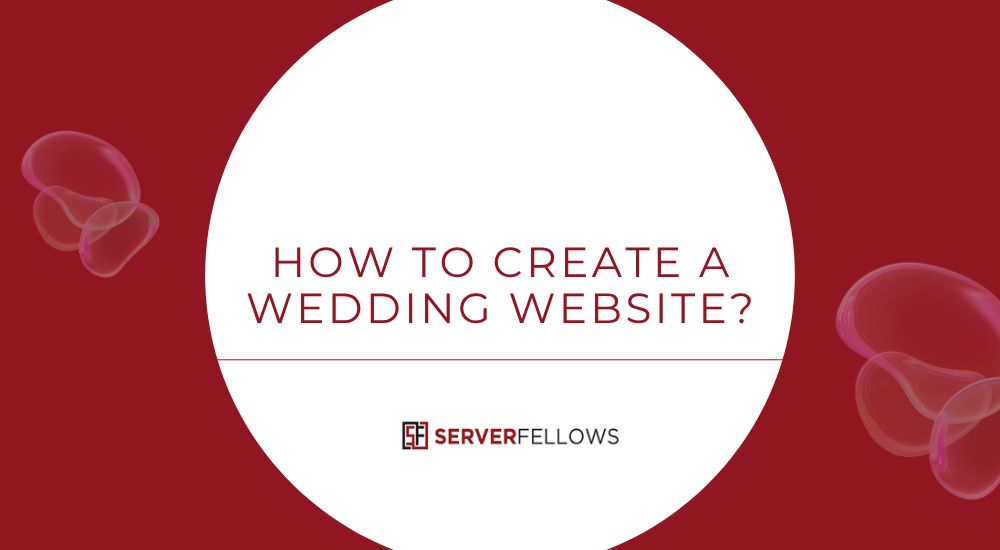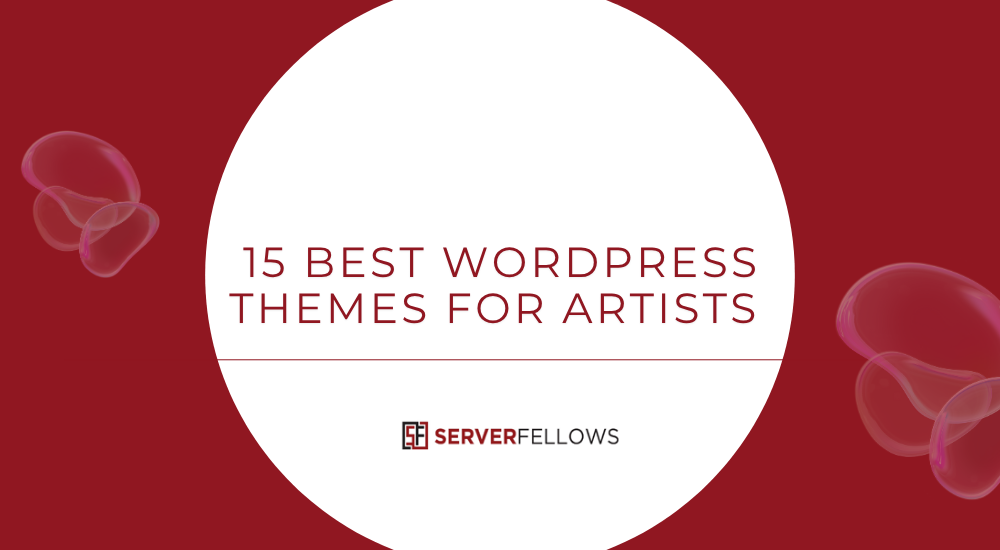
How to Create a Wedding Website
Creating a dedicated wedding website is one of the smartest steps you can take as you plan your celebration. A well-crafted site becomes your guests’ go-to resource for timeline, location, dress code, RSVPs, registry links and more. In this guide we’ll walk through how to create a wedding website that looks beautiful, works reliably, and keeps everyone informed (while saving you time).
Why a Wedding Website Matters
Even when you send out formal invitations and print programmes, details can shift, guests will ask dozens of questions, and important info may get lost in emails or chat groups. That’s why a dedicated site is so useful.
- It centralises everything your guests need — date, time, venue, maps, dress code, accessibility notes.
- It streamlines RSVPs, meal tracking, plus-ones and guest logistics.
- When plans change – weather, parking, last-minute venue updates – you post once and everyone gets the memo. According to industry commentary, wedding websites “are more than just a digital invitation; they’re a comprehensive tool that enhances the planning process and guest experience”. :contentReference[oaicite:0]{index=0}
- Guests get clarity; you field fewer questions and reduce confusion.
Planning Your Platform, Domain and Hosting
The first step in how to create a wedding website is choosing where it will live and how you’ll manage it. These decisions affect ease, cost, flexibility and guest experience.
Platform
Select a builder or CMS that suits your comfort and requirements: drag-and-drop templates if you want simplicity, or full control via a flexible system if you like customisation. Many wedding-site experts recommend platforms offering templates, RSVP tools and mobile optimisation. :contentReference[oaicite:1]{index=1}
Domain
Secure a memorable custom URL (for example YourNamesWedding.com or FirstnameAndFirstname.wedding) that’s short, spellable and timeless. A custom URL looks more polished and is easier for guests to remember. :contentReference[oaicite:2]{index=2}
Hosting and Security
Ensure your hosting (or site builder) offers SSL (so your URL begins with https://), reliable uptime, backups and guest-data protection. A secure site gives peace of mind for both you and your visitors.
This is also a good moment to consider using a managed hosting or website maintenance service to keep performance smooth — for example a provider like Serverfellows can assist if you prefer not to manage technical details yourself.
Budgeting
Compare monthly vs annual payments, check for add-ons (domains, emails, custom code) and ensure you’re comfortable with the total cost before launching.
Pre-launch checklist:
- Platform chosen
- Custom domain purchased
- Hosting / SSL enabled
- RSVP and registry integration compatible
- Mobile preview tested
Launching privately for a short period lets you test forms and workflows before wide sharing.
Designing the Look and Feel
Once your foundation is set, you’ll want a site that visually represents you, your event style and the guest experience. Good design isn’t just “pretty” — it supports clarity, readability and ease of use.
Visual direction
- Choose a colour palette that echoes your wedding tones (e.g., neutrals + accent colour, or vibrant hues).
- Pick two readable fonts: one for headings (bold, distinctive) and one for body text (clean, legible).
- Use high-quality photos and subtle textures — for example one portrait of you as a couple, and supporting imagery that reflects the venue or season.
- Space matters: keep layouts airy with plenty of white space, avoid overly busy backgrounds or heavy animations.
- Ensure contrast and accessibility: text should be readable at a glance, on mobile and desktop.
Mobile-first approach
Many guests will view on their phones — so design in mobile view first, then scale up for desktop. According to expert tips on how to create a wedding website, mobile optimisation is essential. :contentReference[oaicite:3]{index=3}
Branding and personalisation
- Consider adding your names (and date) in a custom header or logo.
- Use consistent iconography (for example matching map pins, schedule icons).
- Subtle animations (fade-in of sections, hover states) may add polish—but keep them smooth and minimal, so the site remains fast.
Final review
Before publishing: preview headings, font sizes, contrast and spacing. Walk through major pages on phone and tablet. Are links readable? Are photos crisp and loading quickly? Are navigation labels clear?
Must-Have Pages and Features
In the process of how to create a wedding website, knowing which pages and features guests will actually use is key. Focus on the essentials, keep navigation clean, and aim for clarity above all.
Here are the core pages and features to include:
| Page / Feature | Purpose |
|---|---|
| Home | Welcome, your names, date/time, quick orientation |
| Schedule | Event timeline (ceremony, reception, any extras) |
| Venue / Map | Location details, parking, accessibility |
| Dress Code | Visual cues, do’s & don’ts |
| RSVP | Guest response form, meal choices, plus-ones |
| Registry | Links to your wish list, group-gifts |
| Contact | A simple form or email for questions |
| Announcements | Last-minute updates for guests |
Home Page
Your homepage is the “front door”. Make it clear: date, names, location and a prominent “Details” or “Enter Site” button. Keep text concise.
Schedule
Outline each segment of your celebration: ceremony time, cocktail hour, dinner, reception, any send-off. A well-laid schedule helps guests plan their day and arrive on time.
Venue / Maps / Accessibility
Provide maps (embedded from Google or similar), parking instructions, shuttle info, directions, and any notes for guests with mobility needs. According to planning tips, driving directions and accurate guest logistics are vital. :contentReference[oaicite:4]{index=4}
Dress Code
What kind of attire do you expect? Formal, cocktail, beach casual, festive? Include visuals or short descriptions so guests know exactly. The site is a better place for detailed guidance than the small print on an invitation. :contentReference[oaicite:5]{index=5}
RSVP / Registry / Logistics
- Build an RSVP form capturing names, plus-ones, meal preferences, allergies and accessibility requests.
- Link to your registry prominently but tactfully – a site gives the ideal space for registries (rather than invitations). :contentReference[oaicite:6]{index=6}
- Provide lodging info, room blocks, travel tips, child-care notes if you have them.
- Have an FAQ section to reduce repetitive questions — for example dress code clarifications, travel/shuttle info, WiFi password if relevant.
Navigation & Labels
Keep navigation minimal — 5 to 7 items max is ideal. Too many menu items can confuse guests. A streamlined nav improves UX. :contentReference[oaicite:7]{index=7}
Launching and Sharing Your Site
Now that the site is built and tested, it’s time to go live and get the word out. Because you’re creating how to create a wedding website step by step, this stage determines how effectively guests will use it.
Pre-launch check
Before you hit publish:
- Proofread everything (names, times, dates, spelling).
- Test all links, RSVP flows and registry URLs.
- Preview on mobile and desktop.
- Ensure SSL is active (you should see the padlock icon in browser).
- Enable analytics if you want to track visits and engagement.
Sharing the link
Once live, share it strategically:
- Include the URL on your save-the-date cards and wedding invitations (or a QR code).
- Email your guest list with a brief note: “We’ve launched our wedding website — click here to view details & RSVP.”
- Post in private family or wedding-party chats.
- Create a custom email (e.g., hello@[yourdomain].com) for communications.
- Pin the link to your registry and on any calendar invites you send.
If you’ve built the site via a managed service or opted for professional hosting (for example, with a partner like Serverfellows), this is also a good time to ensure your backup and support systems are in place.
Ongoing Updates and Post-Wedding Use
Building the site is only half the journey — keeping it current and re-using it after the big day adds real value.
Timely updates
After live sharing, you still need to keep the content fresh:
- Post any timeline tweaks or last-minute changes (vendor shift, parking reroute).
- Update with weather notes or shuttle times if relevant.
- Publish rehearsal dinner info or welcome‐events for out-of-town guests.
- Ensure all new details get an audible “announcement” or banner on the site.
After the wedding
Once the big day is done, the site still has purpose:
- Add a photo gallery or video reel and embed via your favourite platform.
- Post a thank-you message to guests and perhaps a note about honeymoon or future plans.
- Archive the logistics pages but keep key info accessible (URLs often live on).
- Export RSVP data, guest info and meal selections for your records.
- Set a reminder to review the site monthly (or quarterly) in case you wish to repurpose it (for anniversaries, shared memories, etc.).
Content lifecycle
| Update Focus | Action |
|---|---|
| Last-minute changes | Post alerts on homepage or banner |
| Travel/shuttles | Pin schedules on venue/logistics page |
| Photos and video | Embed albums or link to streaming |
| Thank-you notes | Share as a “Thank You” page or blog |
| Registry status | Mark fulfilled items or share group-gift updates |
Frequently Asked Questions
How Do We Handle Accessibility for Visually Impaired Guests?
Focus on accessibility: use high contrast colours, large readable fonts, descriptive link text, alt text for images, keyboard navigation, ARIA labels, transcripts or captions where video is used. Provide a phone or email option for RSVPs for guests who prefer that path. Test with tools like WAVE, Lighthouse and screen-readers.
Can We Password-Protect Only Certain Pages?
Yes. Many builders allow password protection per page rather than the entire site. This is useful for a private page for your wedding party, vendor access, or parent group. Set a shared password, mention it to those invited, test mobile access and screen-reader compatibility.
What Legal/Privacy Policies Should We Include?
Include:
- A privacy policy explaining how you collect guest data (RSVP responses, emails, dietary/health info).
- A terms-of-use or site notice.
- If guest payments (e.g., honeymoon fund) are collected, include payment terms and mention PCI compliance.
- If you collect cookies or use analytics, consider a cookie notice and consent banner.
- If you’re serving multilingual or international guests, make sure you comply with relevant data-protection laws (e.g., GDPR/CCPA) if applicable.
How Do We Make the Site Multilingual?
If your guest list spans languages, enable a language-switcher and translate core pages. Use hreflang tags, select a translation plugin or service, localise dates/currency/timezones, test RSVP forms and emails in each variant. Provide fallback language if some guests don’t pick their module.
How Can We Archive and Export the Site Content?
Download all pages as HTML or export through your builder’s backup tool. Save media (photos/videos) locally or to cloud storage. Download RSVP and guest-list data as CSV. Create a ZIP archive for safe keeping. If you wish a long-term static version, mirror the site (for example using HTTrack) and store files securely.
Conclusion
You now have a comprehensive guide on how to create a wedding website that is functional, beautiful and guest-friendly. From choosing your platform and domain, to designing a cohesive aesthetic and building essential pages, to launching and keeping the site updated — the path is clear.
Set up the site, personalise it to reflect your celebration, share the link widely, and maintain it as your planning evolves. After the big day, use it as a keepsake, gallery and centrepiece of memories.
By doing so, you reduce stress, field fewer questions, give your guests a reliable home base — and focus more on what matters most: enjoying your celebration.
When you’re ready to take your website hosting, design or maintenance to the next level, consider expert help from services such as Serverfellows so you can focus on the celebration while the technical side is handled.
Start now — and build a hub for your wedding that works for everyone.


